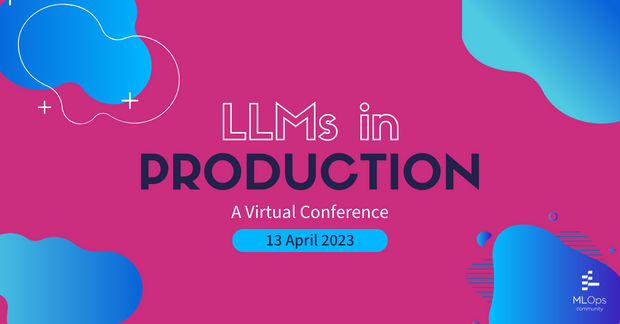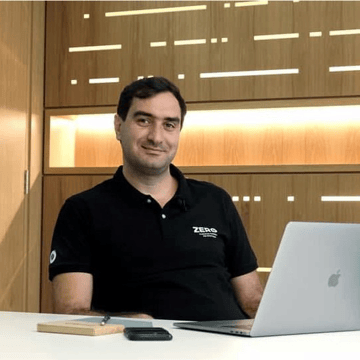

LIVESTREAM
LLMs in Production Conference
# Large Language Models
Large Language Models have taken the world by storm. But what are the real use cases? What are the challenges in productionizing them?
In this event, you will hear from practitioners about how they are dealing with things such as cost optimization, latency requirements, trust of output and debugging.
You will also get the opportunity to join workshops that will teach you how to set up your use cases and skip over all the headaches.
Speakers
Meryem Arik
Co-founder/CEO @ TitanML
Linus Lee
Research Engineer @ Notion
Lina Weichbrodt
Freelance Machine Learning Development + Consulting @ Pragmatic Machine Learning Consulting
Shreya Rajpal
Creator @ Guardrails AI
Daniel Jeffries
Chief Executive Officer @ Kentauros AI
Raza Habib
CEO and Co-founder @ Humanloop
Harrison Chase
CEO @ LangChain
Saahil Jain
Engineer @ You.com
Alex Ratner
CEO and Co-founder @ Snorkel AI
Justin Uberti
CTO and Co-founder @ Fixie
Hanlin Tang
CTO @ MosaicML
Mario Kostelac
Staff Machine Learning Engineer @ Intercom
Vin Vashishta
CEO @ V-Squared
Willem Pienaar
Co-Founder & CTO @ Cleric
Jared Zoneraich
Founder @ PromptLayer
Cameron Feenstra
Principal Engineer @ Anzen
Ashe Magalhaes
Founder @ Hearth AI
Luis Ceze
CEO and Co-founder @ OctoML
Eli Mernit
CEO / Founder @ Beam
Diego Oppenheimer
Head of Product @ Hyperparam
Gevorg Karapetyan
Co-founder and CTO @ ZERO Systems
Demetrios Brinkmann
Chief Happiness Engineer @ MLOps Community
Tanmay Chopra
Founder / CEO @ Emissary
Jon Turow
Partner @ Madrona
Daniel Campos
Research Scientist @ Snowflake
Jerry Liu
CEO @ LlamaIndex
Jacob van Gogh
Member of Technical Staff @ Adept AI
Andrew Seagraves
VP of Research @ Deepgram
Hannes Hapke
Principal Machine Learning Engineer @ Digits
Pascal Brokmeier
Lead Data Engineer @ McKinsey and Company
Torgyn Erland
Data Scientist @ QuantumBlack, AI by McKinsey
Samuel Partee
CTO & Co-Founder @ Arcade AI
Vikram Chatterji
Co-founder and CEO @ Galileo
Deepankar Mahapatro
Engineering Manager @ Jina AI
Adam Nolte
CTO and Co-founder @ Autoblocks
Daniel Herde
Lead Data Scientist @ QuantumBlack, AI by McKinsey
Braden Hancock
Co-founder and Head of Technology @ Snorkel AI
Viktoriia Oliinyk
Data Scientist @ QuantumBlack, AI by McKinsey
Agenda
Track View
Track 1
Track 2
Workshops
From3:00 PM
To3:10 PM
GMT
Tags:
Stage 1
Opening / Closing
Welcome
Speakers:

From3:10 PM
To3:40 PM
GMT
Tags:
Stage 1
Keynote
DevTools for Language Models: Unlocking the Future of AI-Driven Applications
+ Read More
Speakers:



From3:40 PM
To4:10 PM
GMT
Tags:
Stage 1
Keynote
Age of Industrialized AI
+ Read More
Speakers:

From4:10 PM
To4:40 PM
GMT
Tags:
Stage 1
Panel Discussion
Data Privacy and Security
Speakers:









From4:40 PM
To4:50 PM
GMT
Tags:
Stage 1
1:1 networking
Improvised Musical Break
Speakers:

From4:50 PM
To5:20 PM
GMT
Tags:
Stage 1
Presentation
Efficiently Scaling and Deploying LLMs
Speakers:

From5:20 PM
To5:30 PM
GMT
Tags:
Stage 1
Lightning Talk
No rose without a thorn - Obstacles to Successful LLM Deployments
+ Read More
Speakers:

From5:30 PM
To5:40 PM
GMT
Tags:
Stage 1
Lightning Talk
Emerging Patterns for LLMs in Production
+ Read More
Speakers:

From5:40 PM
To5:50 PM
GMT
Tags:
Stage 1
Lightning Talk
LangChain: Enabling LLMs to Use Tools
+ Read More
Speakers:

From5:50 PM
To6:20 PM
GMT
Tags:
Stage 1
Presentation
Generative Interfaces beyond Chat
+ Read More
Speakers:

From6:20 PM
To6:40 PM
GMT
Tags:
Stage 1
1:1 networking
Prompt Hacking Competition
+ Read More
Speakers:

From6:40 PM
To7:10 PM
GMT
Tags:
Stage 1
Presentation
Solving the Last Mile Problem of Foundation Models with Data-Centric AI
+ Read More
Speakers:

From7:10 PM
To7:40 PM
GMT
Tags:
Stage 1
Panel Discussion
Cost Optimization and Performance
Speakers:









From7:40 PM
To7:50 PM
GMT
Tags:
Stage 1
1:1 networking
Guided Meditation Break
Speakers:

From7:50 PM
To8:20 PM
GMT
Tags:
Stage 1
Presentation
Want high performing LLMs? Hint: It is all about your data
+ Read More
Speakers:

From8:20 PM
To8:50 PM
GMT
Tags:
Stage 1
Presentation
Using LLMs to Punch Above your Weight!
+ Read More
Speakers:

Event has finished
April 13, 3:00 PM GMT
Online
Organized by

MLOps Community
Event has finished
April 13, 3:00 PM GMT
Online
Organized by

MLOps Community







































